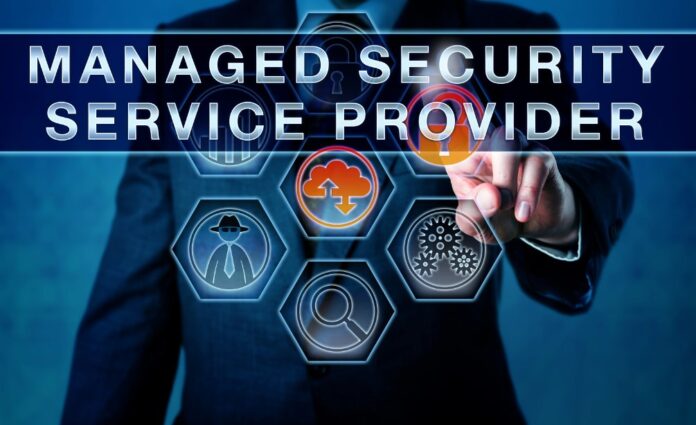
Businesses in the digital world are constantly at risk from cyberattacks, which could cause significant financial and reputational harm. Therefore, protecting a company network is essential. The best practices and strategies for guarding your company’s network against unauthorized access, data breaches, and cyber threats are covered in this piece.
1. Network Segmentation
Network segmentation involves dividing a business network into smaller subnetworks, each with its own set of security policies and access controls. This approach reduces the attack surface, as cybercriminals must bypass multiple layers of security to gain access to sensitive information.
Additionally, network segmentation isolates infected devices, preventing the spread of malware throughout the entire network.
2. Implement Strong Access Controls

Implementing strong access controls ensures that only authorized users can access your network. This can be achieved through the following methods:
- Role-based access control (RBAC) ─ Assign permissions based on specific roles within the organization, ensuring that users only have access to the resources necessary to perform their job duties.
- Multi-factor authentication (MFA) ─ Requires users to provide multiple forms of identification, such as a password and a fingerprint or a one-time code sent to their mobile device.
- Regularly review and update user permissions ─ Periodically audit user accounts and privileges, and revoke access for users who no longer require it.
3. Update and Patch Regularly
Critical security improvements are frequently included in software updates and patches. Maintaining an up-to-date inventory of all software and hardware and applying patches as soon as they become available is important for network security.
This covers firmware for routers, switches, and other network devices in addition to operating systems and apps. Tools for automated patch administration can speed up this procedure and lower the chance of human error.
4. Use Strong Encryption
Encryption protects data by making it unreadable to anyone without the proper decryption key. Utilize strong encryption protocols such as Advanced Encryption Standard (AES) for data at rest and Secure Sockets Layer (SSL) or Transport Layer Security (TLS) for data in transit. Additionally, secure Wi-Fi networks with the Wi-Fi Protected Access 3 (WPA3) protocol to prevent unauthorized access and eavesdropping.
5. Regular Network Monitoring and Audits

To spot suspicious activity, pinpoint vulnerabilities, and guarantee adherence to security policies, monitor network data and conduct routine audits. To recognize and stop malicious traffic, use intrusion detection and prevention systems (IDPS) like Clearnetwork. Additionally, log data can be collected, analyzed, and correlated by security information and event management (SIEM) tools, facilitating quicker discovery of threats and breaches.
To find network weaknesses and evaluate the efficacy of your security measures, conduct vulnerability evaluations and penetration tests. To lessen the danger of exploitation, promptly fix identified vulnerabilities.
6. Employee Training and Awareness
Employees play a crucial role in network security. Educate them on security best practices, such as creating strong passwords, recognizing phishing attempts, and safely handling sensitive data. Regular training sessions and periodic reminders can help keep security top of mind for employees.
7. Create and Enforce Security Policies
Develop comprehensive security policies that outline the acceptable use of company resources, access controls, and incident response procedures. Ensure that all employees are aware of these policies and enforce them consistently. Regularly review and update policies to adapt to the evolving threat landscape and changes in your organization.
8. Backup and Disaster Recovery

Partnering with a managed security service provider (MSSP) can be a wise choice for companies without dedicated IT security staff or for those looking for more help. Network monitoring, vulnerability analyses, and incident reaction are just a few of the services that MSSPs provide to help safeguard your network and guarantee compliance with industry standards. You can concentrate on your primary business while preserving a secure network environment by utilizing the knowledge of an MSSP.
9. Use Endpoint Protection
Endpoint devices, such as laptops, smartphones, and tablets, can introduce vulnerabilities to your network. Implement endpoint protection solutions that include antivirus, anti-malware, and firewall capabilities to detect and block threats at the device level. Regularly update endpoint protection software and educate employees on the importance of keeping their devices secure.
10. Partner with Managed Security Service Providers (MSSPs)
For businesses without dedicated IT security staff or those seeking additional support, partnering with a managed security service provider (MSSP) can be a valuable option. MSSPs offer a range of services, such as network monitoring, vulnerability assessments, and incident response, to help protect your network and ensure compliance with industry regulations. By leveraging the expertise of an MSSP, you can focus on your core business while maintaining a secure network environment.
Managed Security Service Providers (MSSPs) are third-party organizations that offer cybersecurity services to businesses. MSSPs provide security monitoring, threat detection, incident response, and other cybersecurity services. These services are typically provided on a subscription basis, which allows businesses to outsource their cybersecurity needs to a third-party provider.
MSSPs have become increasingly popular due to the rising threat of cyberattacks. With the increase in cyber threats, businesses need to ensure that their networks and data are secure. MSSPs offer a cost-effective solution to this problem by providing businesses with the expertise and resources needed to protect their networks and data.
With the rise in cyber threats, the need for effective cybersecurity measures has never been more crucial. Companies of all sizes need to ensure that their networks and data are secure. However, not all businesses have the resources or expertise to manage their cybersecurity needs internally. This is where Managed Security Service Providers (MSSPs) come in. In this article, we will discuss what MSSPs are, their benefits, and how to choose the right provider for your organization.

The Benefits of MSSPs
There are several benefits to using an MSSP, including:
- Cost savings ─ MSSPs can provide cost savings to businesses by eliminating the need to hire and train internal security personnel.
- Expertise ─ MSSPs have a team of cybersecurity experts who are trained to detect and respond to cyber threats.
- 24/7 monitoring ─ MSSPs provide 24/7 monitoring of your network and data to detect any potential threats.
- Scalability ─ MSSPs can scale their services to meet the needs of businesses of all sizes.
- Compliance ─ MSSPs can help businesses meet regulatory compliance requirements by providing them with the necessary tools and resources.
Conclusion
Securing a business network is essential in an age of growing cyber threats. Businesses can effectively secure their networks, reduce the risk of cyberattacks, and preserve the trust and confidence of their stakeholders by implementing the strategies and best practices described in this article.











